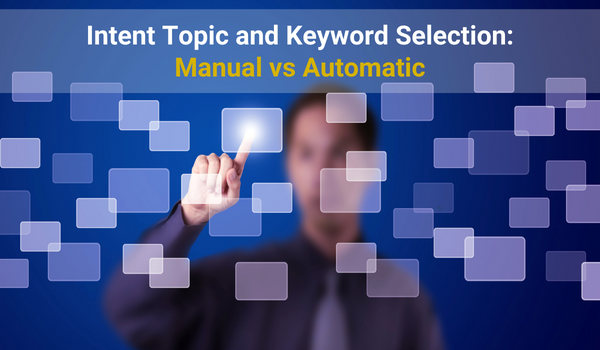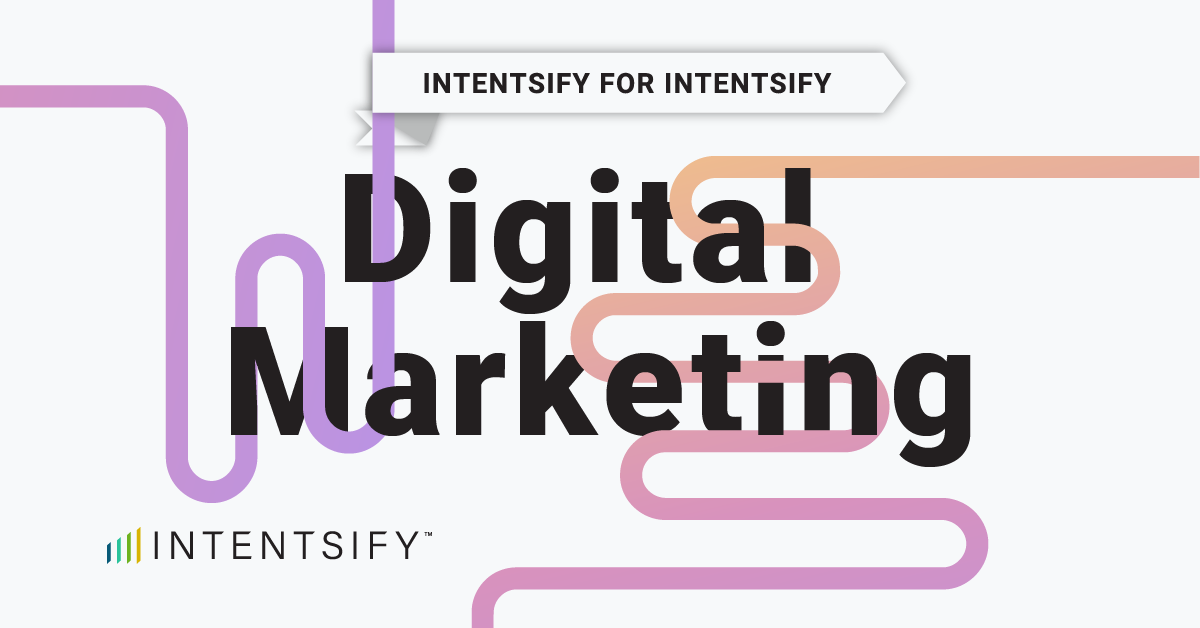Whether you’re an intent data expert or new to the concept, you’ve probably heard of intent topics and keywords. Intent topics and keywords are the foundation of any intent-based marketing strategy and are essential for understanding buyer intent, which companies to target, and with what messaging.
You can use manual and/or automatic methods to select topics and keywords, and each method has its advantages and drawbacks. In this piece, we’ll explain intent topics and keywords, how to best leverage both, and the differences between using manual and automatic methods to select the right topics and keywords for your business.
Understanding Intent Topics and Keywords
When getting started with intent data, it’s important to understand that there are many types of intent data. Some offer a general, broad-based view of a company’s content consumption activity, while others provide a more focused, niche picture. And intent data can come from many sources, including cooperatives of third-party websites, owned properties, ad exchanges and public domains. But regardless of source, all intent data is organized around topics or keywords. Understanding how to leverage each method effectively is critical to getting the most out of your intent data investment.
Intent Topics
Intent topics look at an entire piece of content to understand the context and assess its relevance to one or more predefined subjects (i.e., topics). Content relevance is typically defined using machine learning, such as natural language processing (NLP).
One big benefit of using NLP for monitoring topics is the ability to further segment based on content relevance. For example, business buyers consuming content like product comparison sheets, buying guides, and case studies signal strong buyer intent. NLP models categorize and determine the buying stage of this online research behavior, helping marketers get a better understanding of where target accounts are in their path to purchase and implement the best tactics and messaging to drive impactful results.
Intent Keywords
Intent keywords look for exact words or phrases within a piece of content or in the URL. Monitoring keywords provide marketers with far more flexibility than with predefined topics; marketers can monitor whichever terms are most relevant to their business, products, or solutions. Intent keywords are most beneficial to organizations with niche solutions and for targeting businesses that are actively consuming content related to specific keywords.
How to Select Intent Topics and Keywords
Using your buyer’s journey to curate your intent topics and keywords ensures that you have a holistic view of how intent data will drive impact across your use cases and helps you think through all the different ways that intent data can be used for your marketing, sales, and customer success efforts. While each organization’s buyer journey looks a little different, here’s a simple framework to help you get started.
Stage 1: Identifying the Problem
Select topics and keywords based on pain points, challenges, and problems that your product solves.
Stage 2: Discovering Solutions
Select topics and keywords based on the values and benefits of your solution and those of your competitors.
Stage 3: Researching Solution Providers
Select topics and keywords based on your brand, your solution’s products and features, and your competitor’s brands and products or features.
Stage 4: Deciding to Renew or Churn
For upsell opportunities, select topics and keywords based on challenges related to your upsell products or solutions. For renewal or churn, select topics and keywords based on your competitor’s brand, products, or solutions.
Manual Topic and Keyword Selection
Manual topic and keyword selection involves thorough analysis of the different keywords associated with your target personas, brand, products, or competitors and cross-referencing with intent topic taxonomies to produce an intent topic and keyword list. You can then assign those topics and keywords to the relevant buyer journey stages to ensure a comprehensive list for all relevant use cases. Intentsify’s checklist for selecting intent data topics and keywords provides a framework for how to manually select topics and keywords.
Advantages
- Manual selection ensures a holistic and comprehensive approach for considering all the possible topics and keywords relevant to your target personas, brand, products, and competitors. When you spend the time and effort mapping out your topics and keywords, you ensure you get the greatest value from your intent data investment.
- Alignment with cross-functional teams like marketing, sales, and customer success is critical to intent data success. Working cross-functionally to complete your topic and keyword selection matrix by buying stage and interest provides an opportunity for colleagues to contribute to your intent data strategy. This builds alignment and a greater likelihood for program success.
Drawbacks
- As much as manual efforts help create a holistic and comprehensive approach for topic and keyword selection, they also require a lot of time and effort. Using automated intent data selection tools could get you a majority of the way to your topic and keyword list, saving time and effort.
- Manual selection means you’re also subject to human error or oversight. There’s a risk you’ll miss important topics and keywords, especially when cross-referencing with intent topic taxonomies. Automated solutions may help you discover non-intuitive yet impactful topics and keywords to add to your list.
Automated Topic & Keyword Selection
Automated topic and keyword selection typically leverages machine learning, web scraping, search keywords, or intent topic taxonomy mapping tools to automatically create a list of intent topics and keywords. Intent tools that use machine learning—specifically NLP—scan website pages and automatically identify relevant topics and keywords. These tools also weight the topics and keywords based on their relevancy and density on the websites from which they’re scraped.
Advantages
- Selecting intent topics and keywords is a critical factor to success with intent data. Automated selection methods expedite the process of creating a relevant list. It provides marketers a solid foundation for building upon and developing an intent data-driven strategy in a fraction of the time compared to manual methods.
- Machine learning and NLP are used to identify intent topics from business content. Using automated selection methods that use similar machine learning and NLP technology to scan a brand’s website ensures marketers can map their relevant intent topics to pre-defined intent topic taxonomies.
Drawbacks
- Automated methods provide a solid foundation for selecting topics and keywords—but you need a bit more. A holistic and comprehensive intent data strategy requires further buyer stage and interest segmentation and prioritization. Automated methods are a good starting point, but marketers should continue to use manual intent data selection frameworks to ensure resulting lists satisfy all their use cases.
- A business’s website is the hub for all their products and solutions, and automated methods that scan the entire website may not understand the nuances and significance between product lines and customer segments that the business offers. However, some automated selection tools enable marketers to define pages and areas for scanning, which provides an additional layer of control.
Regardless of which automated intent data tool you use, continue to manually check returned topics and keywords for quality and accuracy.






